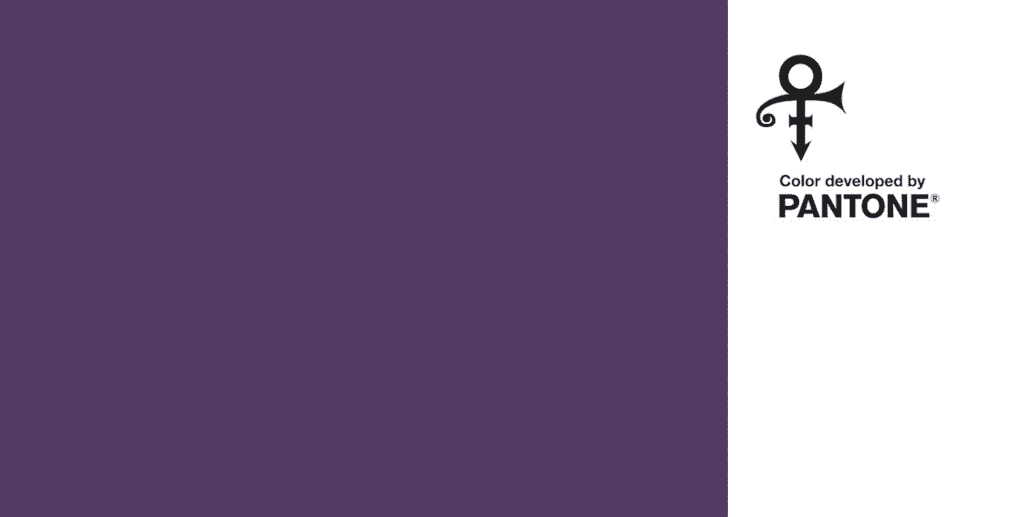For more than four decades, Prince Rogers Nelson became known for many things. He was a fashion plate that set global trends whether he was wearing little more than a crop-top and tightly-fitted low-slung trousers or immaculately-patterned and often, eye-catchingly-colored, suits. He was a “benchmark for any artist who believes themselves driven by creativity and unwilling to relinquish [legal] control” over his intellectual property, as the Daily Beast put it. Beyond that, he, along with some of his peers, he was a champion of breaking from convention and placing personal freedoms at the center of his repertoire.
Of course, he was also known for something else, a single color. Purple. As nary a Prince fan will not know, the artist long-positioned himself with a specific shade of purple (and the color, more generally) – whether it was with his Academy Award-winning film “Purple Rain,” the album for which sold more than 13 million copies in the U.S. and spent 24 consecutive weeks at No. 1 on the Billboard chart, his purple-hued fashion choices, or still yet, the custom purple guitar, which was famously created in the shape of his “Love Symbol” and the custom-made Yamaha purple piano.
Prince, a master not only in music and staging but also in marketing, branded himself in such a way that his identity was, in many ways, interchangeable with both a symbol – the “Love Symbol” with he adopted as a stage name for a period beginning in 1993 – and a color.
“The color purple was synonymous with who Prince was and will always be,” Troy Carter, entertainment advisor to Prince’s estate, said in a statement after the singer’s death in April 2016. Few people – or entities – would likely disagree with the correlation between Prince and the color purple, and the U.S. government is one of those nay-sayers.
In response to a trademark application for registration – which was filed in October 2018 by Paisley Park Enterprises, Prince’s main business company, and which aims to federally protect a specific Pantone shade of “the color purple alone” for use in connection with “musical sound and video recordings” and “entertainment services” – the U.S. Patent and Trademark Office (“USPTO”) has said, “Not so fast!”
While color is, in fact, protectable by trademark law in the U.S., as long as the color at issue identifies a single source of goods and/or services in the minds of consumers, the USPTO has some serious qualms about whether Prince’s estate should be granted a registration for the color purple.
In a preliminary decision issued late last year, the USPTO refused Paisley Park’s application “because the applied-for color mark … is not [necessarily] distinctive of [Paisley Park’s] goods and services.”
To be exact, the national trademark body held that the applied-for trademark “fails to function as a trademark because it consists solely of a color used on [Paisley Park’s] goods and services.” The problem with that is, according to the USPTO, consumers “will not perceive the color purple as identifying [Prince’s Paisley Park venture] as the source of the goods; rather, [they] will perceive the color as a non-source identifying feature of the goods because they are accustomed to encountering … goods or packaging for these goods offered in a variety of colors, including purple.”
In fact, the USPTO points to album covers from Tame Impala, Danny Brown, Kanye West, Future, Chance the Rapper, ASAP Rocky, Cam’ron, and Justin Bieber, among others, as evidence “confirming that many sources of musical recordings such as those identified by [Paisley Park] are offered in purple album covers.”
“Where the use of color is common in a particular field or industry,” as the USPTO’s examining attorney suggests it is here, “customers are more accustomed to recognizing color as a product feature that may enhance the attractiveness of the goods.”
Despite the USPTO’s strong words and preliminary refusal, this is not a done deal for Paisley Park. In order to avoid a second refusal, Prince’s company must provide the USPTO with “sufficient proof of acquired distinctiveness,” i.e., evidence that Paisley Park has been “successful in educating the public to associate the [specific purple hue] with a single source.”
“In other words,” the USPTO states, Paisley Park “must show that the color purple as used on the [goods and services cited in its application] can act as a source-identifying trademark on its own rather than (a) based on other wording featured on the goods or (b) based on the fame of [Paisley Park and Prince].” This evidence “should show how consumers, when viewing just the color purple on the goods or the packaging of the goods, associate the mark with [Paisley Park and Prince] alone and not other musicians or producers of music.”
Paisley Park has until April to submit the required evidence in order to avoid a second refusal from the USPTO.











